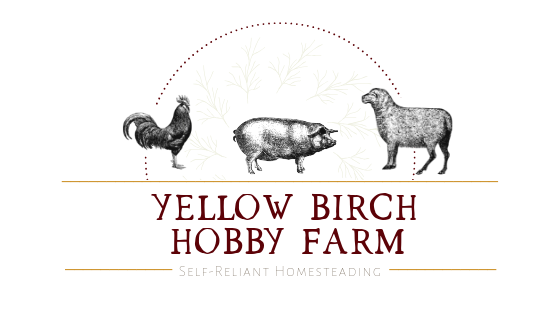Winter officially arrived in northern Minnesota this weekend, and with it the inevitable desire to stay indoors.
It’s the time of year when all I can think about is sleep and food.
And because I have 3 small children, sleep is limited. So why not focus on the other option? Which is exactly what I do. I find myself subscribing to America’s Test Kitchen and scrolling through Amazon, reading reviews on all sorts of cookbooks and cutlery, adding them to my cart and then removing them. Only to add them back. It’s my latest disease. And it feels hopeless.
A good sort of hopeless, if such a thing exists.
But being elbows deep in our meat harvest season doesn’t help either. There are so many options in the freezer at the moment. Just a few months ago, we were scraping the bottom of the barrel, and for a family who sticks to only eating meat that we’ve raised or hunted, that is a terrible- dare I say desperate– feeling. So the relief and renewed excitement for all things nose-to-tail related has come. And this time must be enjoyed. Taken advantage of.
Therefore today, we are taking advantage by way of delicious dry cured pig jowls, or guanciale.
Guanciale is an Italian cured meat (from guancia, Italian for cheek) that is really hard to find on the local market or in any grocery store. But if you can source some pig jowls from your local farmer or butcher, you can easily make guanciale at home. Why?
Because Carbonara.
Because Pasta All’Amatriciana.
Because fat is good and so is bacon and guanciale is both.

To make dry cured guanciale, resulting in a product that you can hang at room temperature in your kitchen, we’re going to follow the same basic idea as in my dry cured bacon post. We will be removing the majority of the liquid from the meat, thus not requiring a curing chamber or a need to regulate specific curing temps or humidity.
All you need to make your own guanciale at home are pig jowls, some basic spices, a non-reactive curing vessel (I used a 13″x9″ glass casserole dish), and a little bit of time.
Ingredients:
(based on 2 1/2 pounds skin-on pig jowls; adjust as necessary)
Spice Rub:
- 1 bay leaf
- 1/2 teaspoon black peppercorns
- 1/2 teaspoon dried oregano
- 1 teaspoon dried red chile flakes
- 1/4 teaspoon aniseeds
- 1 oz. fine sea salt
Additional Cure:
- 2 cups coarse kosher salt
- 2 cups organic cane sugar
– Put all spices except the sea salt into a spice grinder. Finely grind spices into a bowl, add salt, and stir to combine.
– Combine the 2 cups coarse kosher salt and 2 cups organic cane sugar in a separate container that has a lid.
– Next, take your pig jowls and remove any glands (they are a bit of an off-white/gray and shiny), and trim the edges to give them a nice shape. There might also be a somewhat large, oval medallion of cheek meat that can be trimmed away (it’s a little floppy and isn’t completely secured to the inside of the jowl- I cut away and throw in a frying pan with some butter). Then poke the meat side of the jowls with the tip of a sharp knife (such as a fillet knife), pricking it all over. This is a somewhat gentle prick, don’t be going all crazy. And be careful while you’re at it!
– Using your hands, rub the spice mix all over both sides of your jowls until all of it has been used up.
– Sprinkle some of the salt/sugar cure over the bottom of your curing vessel (as mentioned, I use a 13″x9″ glass casserole dish). Place your jowls skin-side down and then sprinkle the salt/sugar cure over the top. Don’t go covering the entire face of the meat with an inch of salt cure, please. Think of it as if you were preparing a nice steak for the grill. Shake the cure evenly over the top, without over doing it. You will have plenty of cure leftover to be used in the following days.

– Then cover your container (I used plastic wrap; if your container has a cover go ahead and use that) and place in the refrigerator.
– After 24 hours, pour off the liquid that the jowls released. Sprinkle the surface with the salt/sugar cure once again and return to the refrigerator. Every 24 hours, pour off the liquid. Your guanciale is ready when just a couple Tablespoons of liquid are being released, approx. 4-7 days. By removing the majority of the liquid, you are making the guanciale room temperature stable.
– When the jowls are finished curing in the refrigerator, rinse them well under running water and then pat dry. Pierce a hole through the top of the meat, thread through some butcher’s twine, and hang.

After a day, a nice sticky pellicle will form. In the days following, the guanciale will stiffen and continue to dry.
When you’re wanting to use your guanciale, trim away a thin slice from the edge, just as you would bacon.


When heated in a frying pan, guanciale renders a lot of delicious fat and lends a powerful punch of flavor to your dishes. A little goes a long way. The key is self-control. It will be very difficult not to stuff your face with these slices of heaven.
So go get in your kitchens and get creative.
And may we all have pig jowls hanging from our ceilings.












My father was from Czechoslovakia…he made our “bacon” this way!
Thank you for sharing!